Ever wonder which animal is the longest-living on Earth? Nature and evolution are astounding, with some creatures defying imagination by living for decades or even centuries. Here are the longest-living animals with unique adaptations that allow them to outlast the average human lifespan.
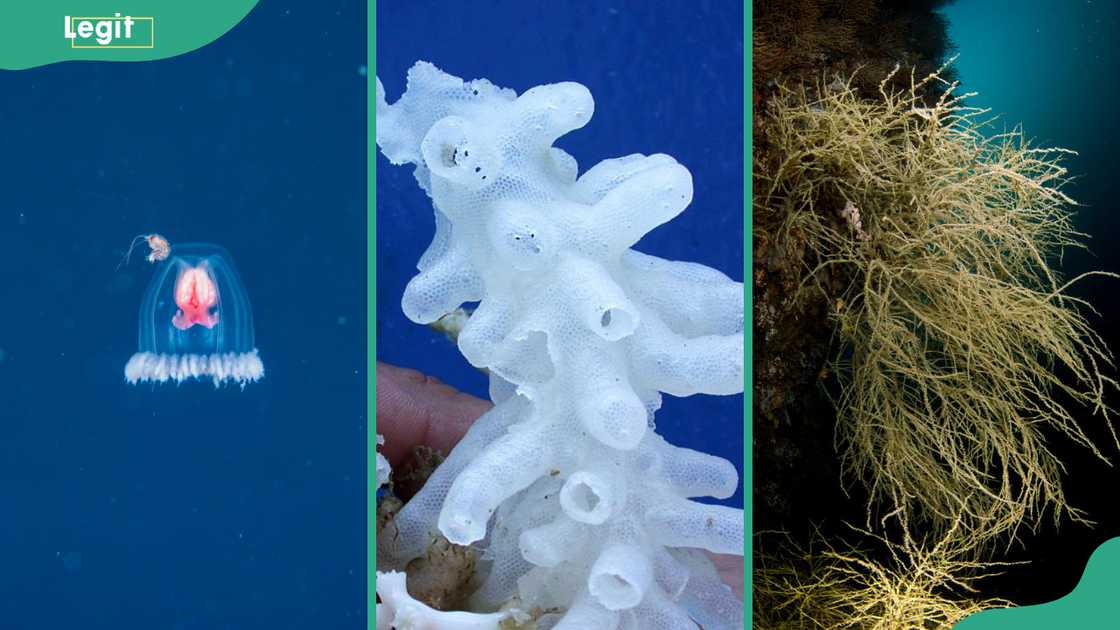
Source: Getty Images
TABLE OF CONTENTS
We strive to provide factual and accurate information. As a result, we used data from the International Fund for Animal Welfare, Live Science, BBC Science Focus Magazine, and BBC Wildlife Magazine to create this list of the longest-living animals. We have used data on each species' maximum age and the adaptations that allow them to outlive the average animals.
Top 10 longest-living animals
The natural world is full of fascinating animals, each with its unique characteristics. While some animals only have a few days to live, others can survive for centuries. The top 10 longest-living animals can endure environmental changes, outliving most animals.
| Rank | Name | Estimated lifespan |
| 1 | The immortal jellyfish | Forever |
| 2 | Deep-sea glass sponges | 10,000 years–15,000 years |
| 3 | Black coral | 4,000 years |
| 4 | Ocean quahog | 400 years–500 years |
| 5 | Greenland shark | 300 years–500 years |
| 6 | Rougheye Rockfish | 205 years |
| 7 | Bowhead whale | 200 years |
| 8 | Koi fish | 200 years |
| 9 | Red Sea Urchin | 200 years |
| 10 | Galápagos tortoise | 100 years–150 years |
1. The immortal jellyfish — Forever
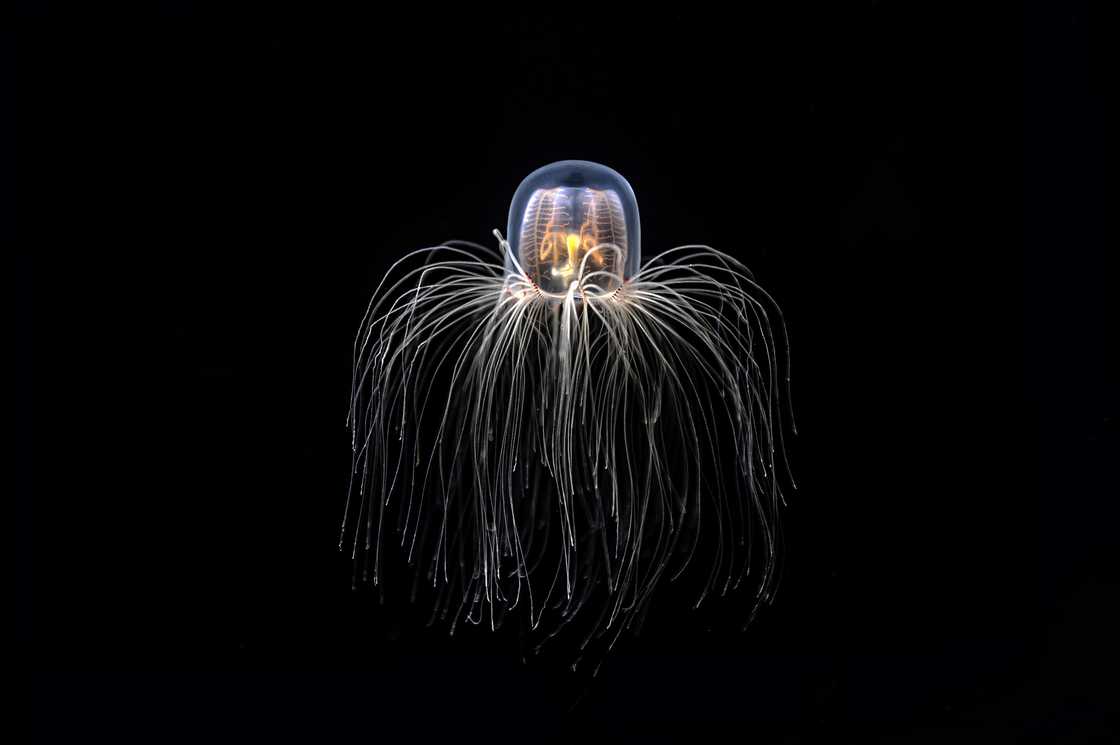
Source: Getty Images
- Scientific name: Turritopsis dohrnii
- Longest recorded lifespan: Forever
Aptly named, the immortal jellyfish has developed an incredible gift that allows it to defy the ageing process. This phenomenon was first observed in the 1990s.
According to the American Museum of Natural History, jellyfish grow to adulthood in weeks. They can regenerate their cells to an earlier growth stage, restarting their lifecycle after stress or physical damage. This biological mechanism is known as transdifferentiation.
2. Deep-sea glass sponges — 10,000 years to 15,000 years
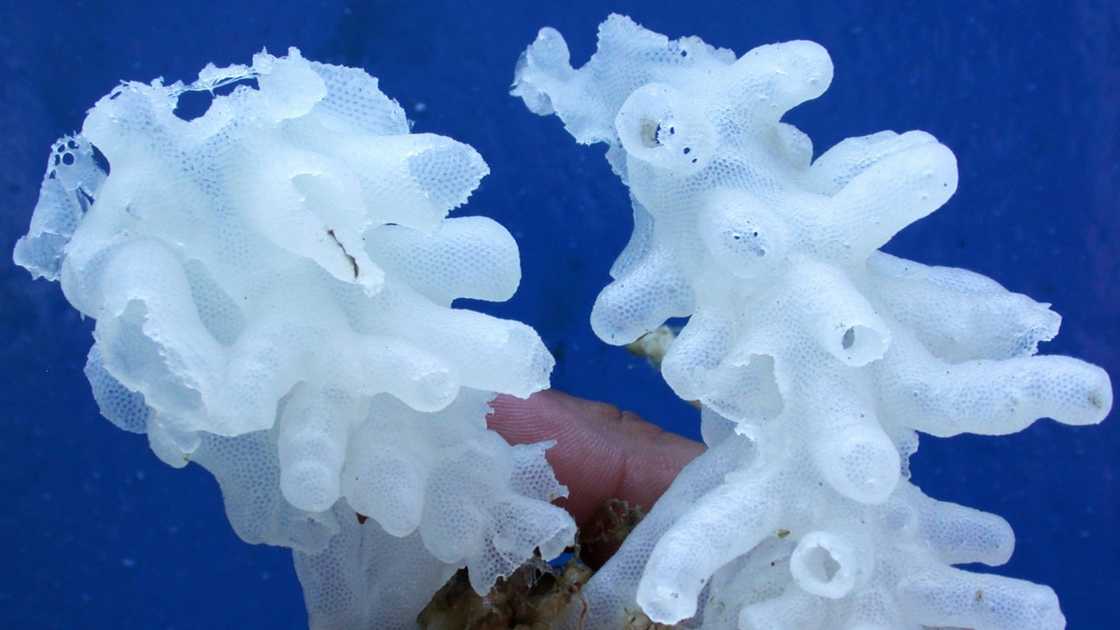
Source: Getty Images
- Scientific name: Hexactinellida
- Longest recorded lifespan: 23,000 years
Hexactinellid sponges, also called deep-sea glass sponges, are made of four and six-pointed siliceous spicules that fuse together in beautiful patterns to form a glass house. A glass sponge can live for as long as 10,000 years and 15,000 years.
Some of the most fascinating facts about these sponges are that they are sessile and porous, meaning they do not move but absorb plankton, oxygen, and silica from the water that flows through them. Their low metabolism and limited cellular decline also help them live long.
3. Black coral — 4,000 years
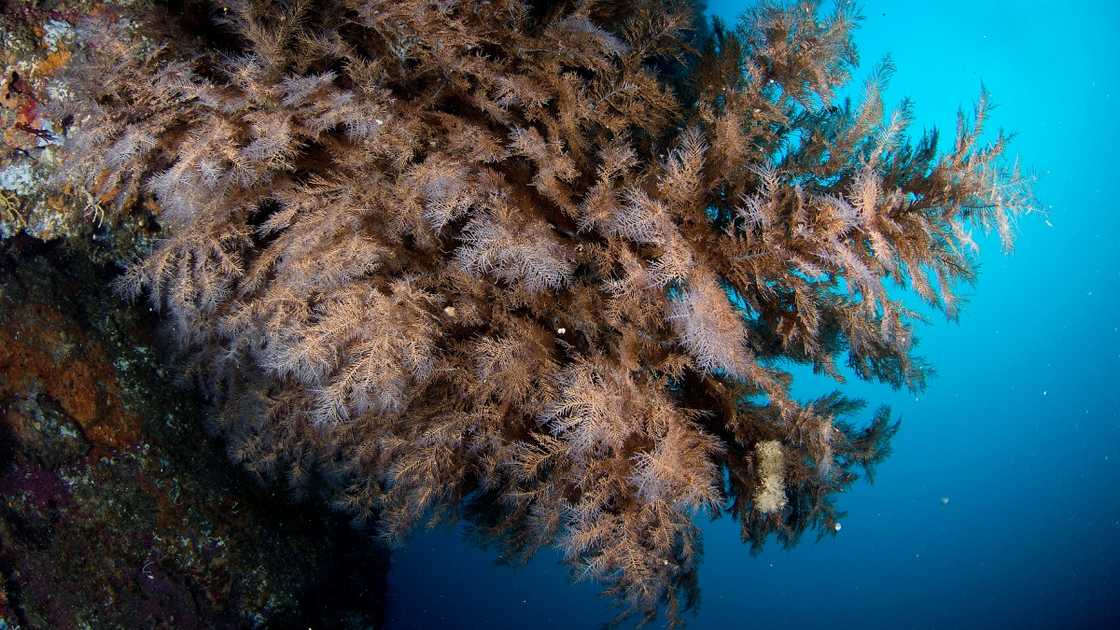
Source: Getty Images
- Scientific name: Antipatharia
- Longest recorded lifespan: 4,270 years
Few animals can live across millennia. The branching Antipatharia is recognised as one of the oldest living animals in the ocean, with an estimated lifespan of up to 5,000 years.
The polyps grow by multiplying and creating genetically identical copies of themselves, creating large tree-like branches. This growth occurs slowly over time.
4. Ocean quahog — 400 years to 500 years
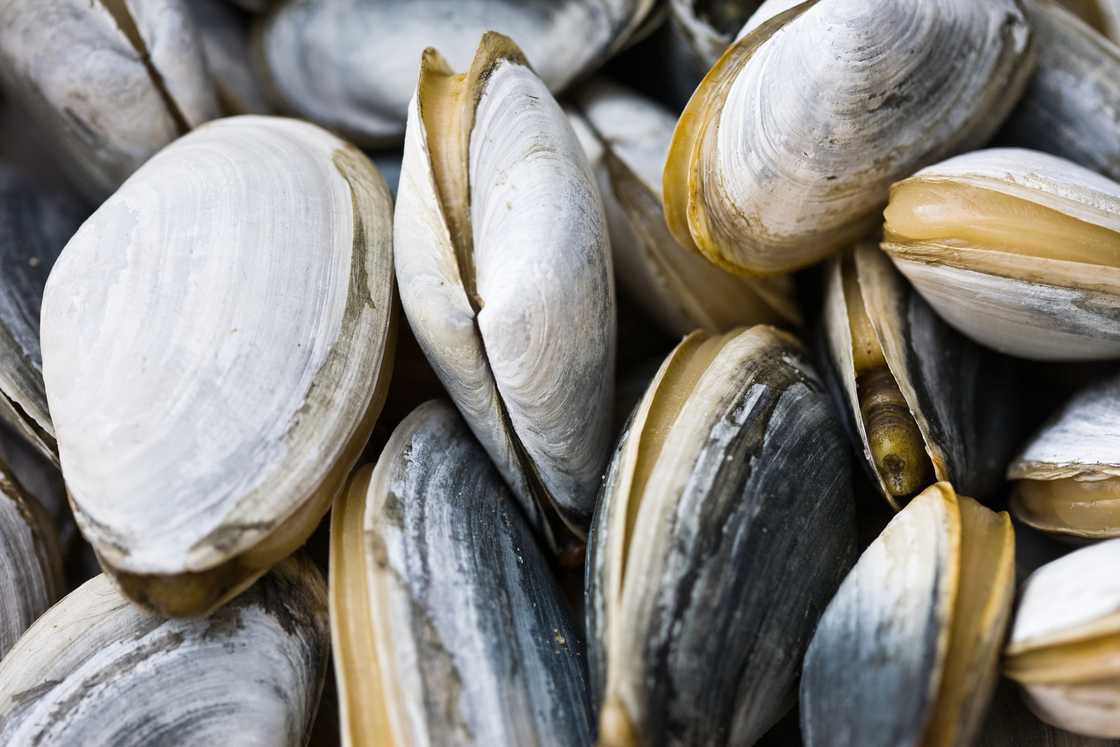
Source: Getty Images
- Scientific name: Arctica islandica
- Longest recorded lifespan: 507 years
The Ocean quahog is known as the oldest living animal in the ocean. The members of clam can live for over 500 years.
They are equipped with slow metabolism processes, which helps conserve energy over long periods, a likely factor in their longevity. In 2006, one clam, famously known as Ming, was found to be 507 years old when discovered off the coast of Iceland.
5. Greenland shark — 300 years to 500 years
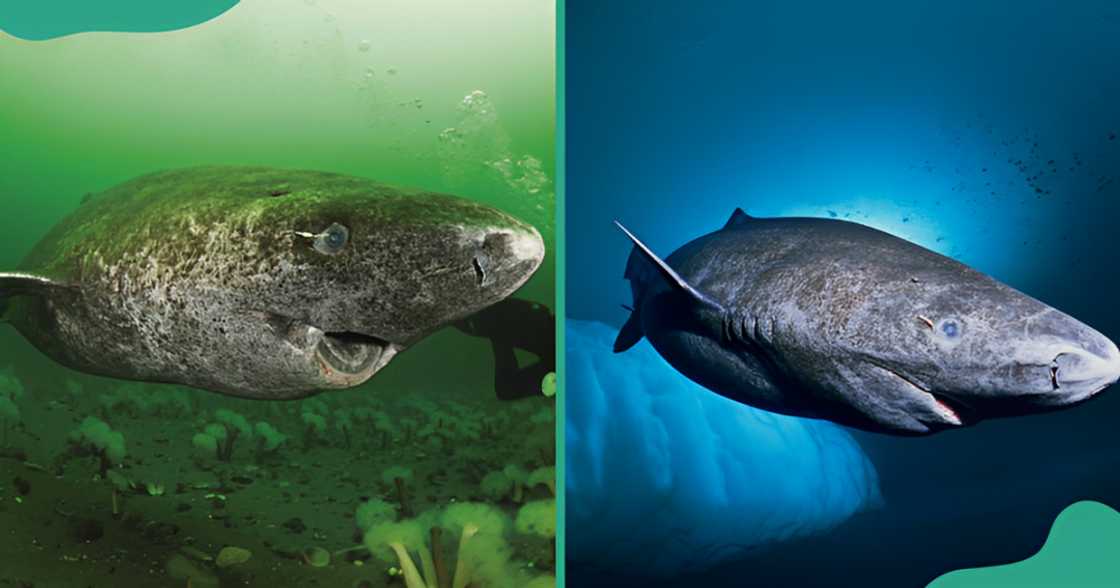
Source: Twitter
- Scientific name: Somniosus microcephalus
- Longest recorded lifespan: 500 years
The Greenland shark is considered the longest-living fish. These Arctic sea animals have an estimated lifespan of 300 to 500 years, grow slowly and reach maturity after about 150 years. Their long life span is attributed to their cold environment and slow metabolism.
6. Rougheye Rockfish — 205 years
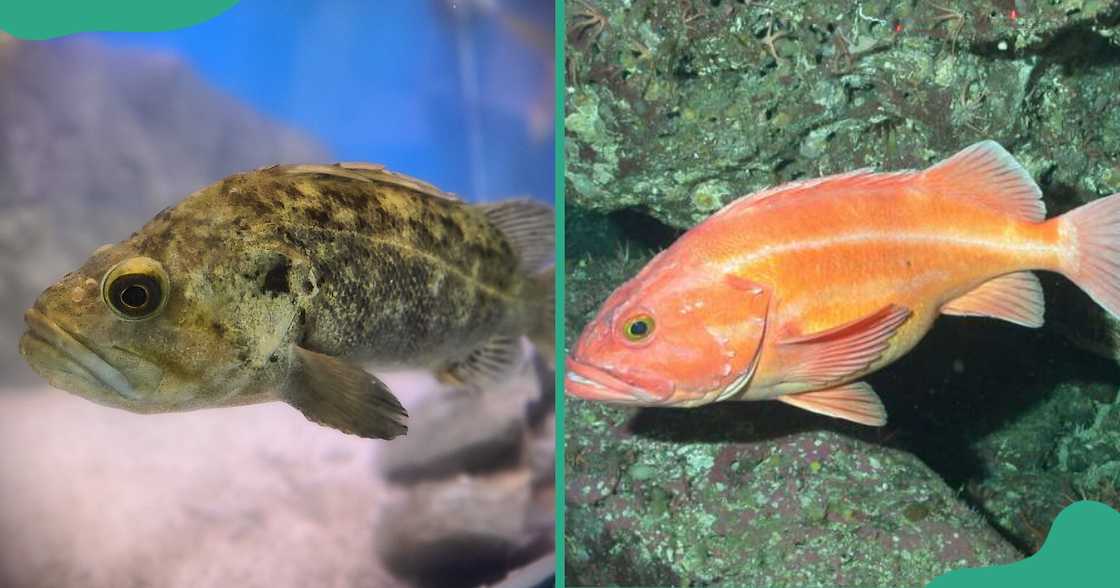
Source: Twitter
- Scientific name: Sebastes aleutianus
- Longest recorded lifespan: 205 years
The Rougheye rockfish is a red-coloured fish found on the North American coast. Its species can reach ages of up to 205 years.
They live at about 150 and 450 meters and have a slow growth and reproduction rate. This lifestyle conserves energy and likely contributes to their extended lifespan.
7. Bowhead whale — 200 years
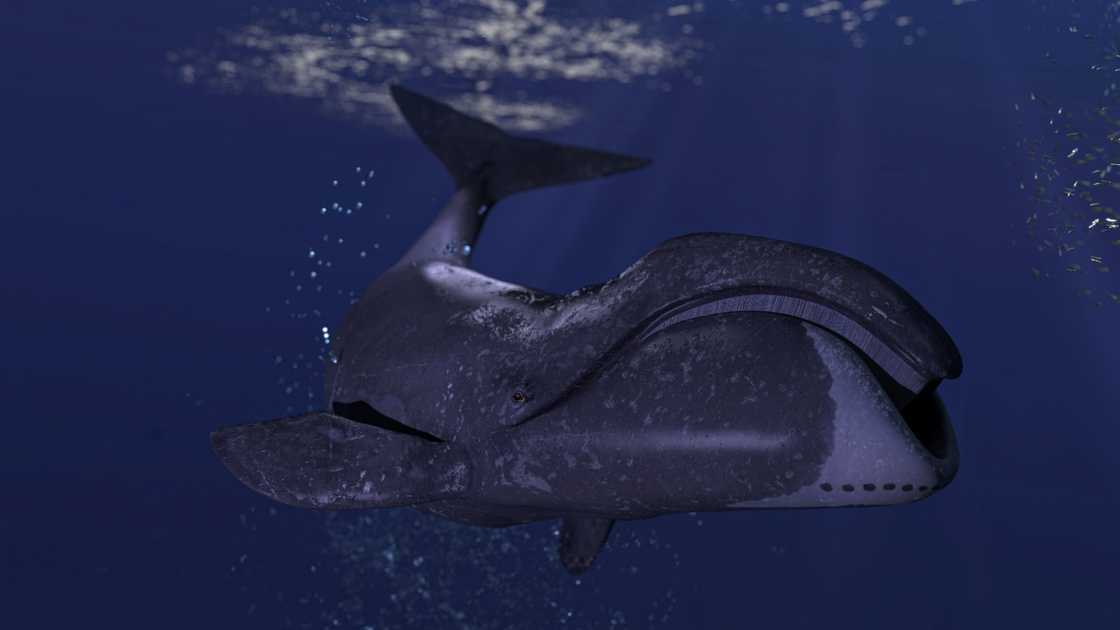
Source: Getty Images
- Scientific name: Balaena mysticetus
- Longest recorded lifespan: 211 years
Bowhead whales are native to the Arctic and sub-Arctic waters. These aquatic giants can live for over 200 years. Their physical attributes, such as a thick blubber layer and slow metabolism, contribute to their longevity. They are also considered to be the longest-living animals after the Ocean quahog and Greenland shark.
8. Koi fish — 200 years
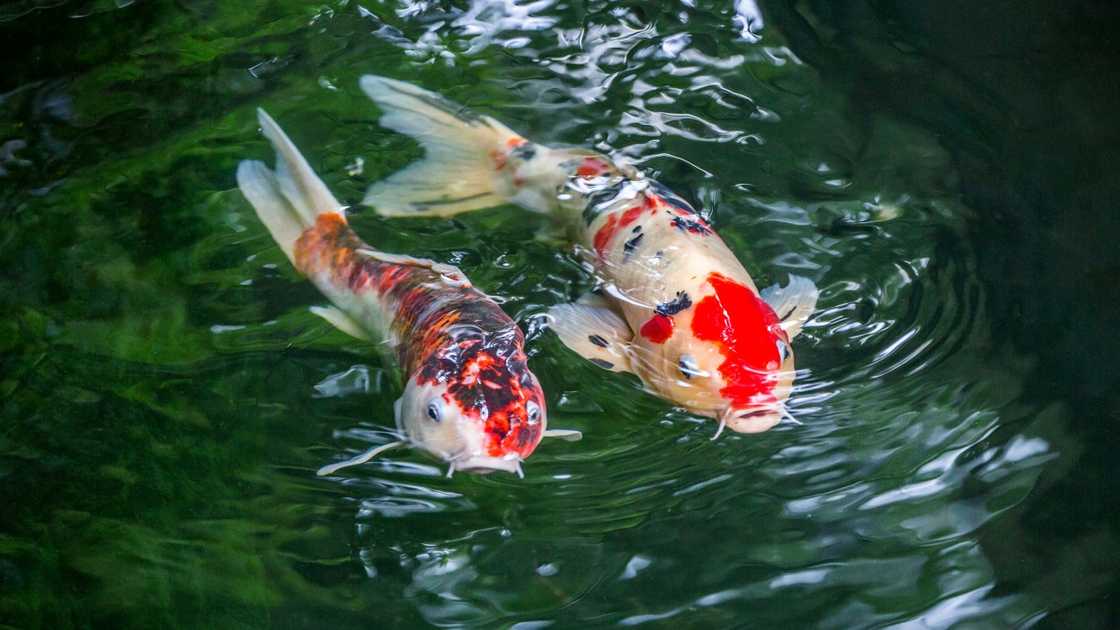
Source: Getty Images
- Scientific name: Cyprinus rubrofuscus
- Longest recorded lifespan: 226 years
Koi fish are beloved pets and a domesticated variety of the common carp. The fish is revered as a symbol of luck, prosperity, good fortune and perseverance. A characteristic that might play a part in their ability to live for over 200 years.
The fish's longevity is attributed to the controlled environments provided by their owners and the species' innate genetic adaptations. For Koi fish living in areas with long winters, their longevity is credited to their long hibernation periods.
9. Red Sea Urchin — 200 years
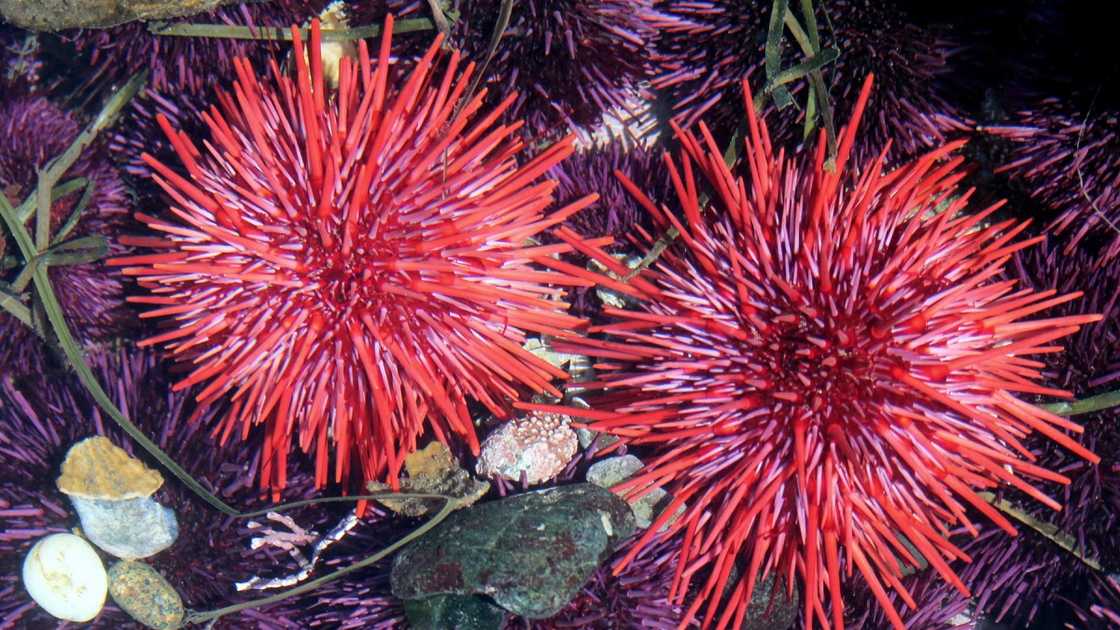
Source: Getty Images
- Scientific name: Mesocentrotus franciscanus
- Longest recorded lifespan: Over 200 years
As its name suggests, this sea urchin is a red animal found along the Pacific Coast of North America. Its lifespan of about 200 years is dependent on environmental conditions.
Its slow growth rate and ability to regenerate damaged tissue contribute to its longevity. As the largest sea urchin, the Mesocentrotus Franciscans, protects itself with a thick and spicy outer skeleton.
10. Galápagos tortoise — 100 years to 150 years
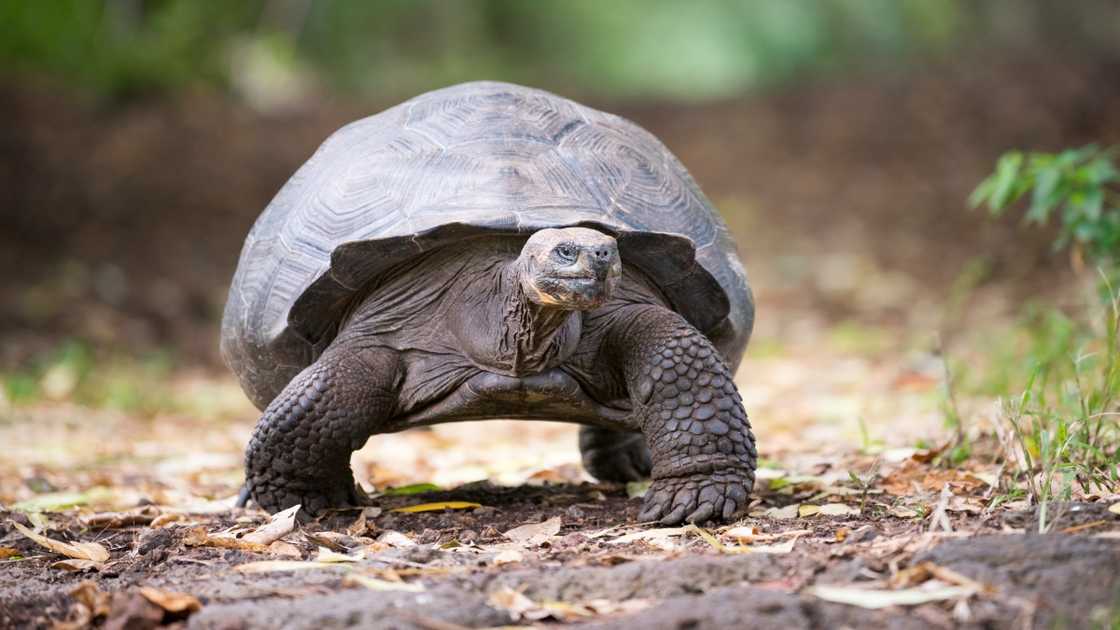
Source: Getty Images
- Scientific name: Chelonoidis niger
- Longest recorded lifespan: 191 years
These giant tortoises on the Galapagos Islands have gained a mythical reputation. Their ability to defy ageing and live for over 100 years is attributed to their slow nature, slow metabolism, and sturdy shells, which contribute to their longevity.
What animal lives the longest?
Glass sponges are widely regarded as the oldest organisms on Earth. Scientists predict they can survive over 10,000 years, potentially up to 15,000. One glass sponge discovered by researchers in the Ross Sea, an Antarctic bay, is believed to be the planet's oldest living species.
Which animal has the longest lifespan in captivity?
Jonathan, a Seychelles giant tortoise estimated to be at least 191 years old, is the oldest known land animal in captivity. Jonathan is cared for by a veterinarian on the island of Saint Helena.
Is bacteria the oldest organism on Earth?
Bacteria are among the oldest organisms on Earth and were likely the first life forms to emerge in the oceans. Evidence of microbial life on land may be as old as 3.48 billion years, and bacteria have existed on Earth for at least 3.5 billion years.
Animals with extraordinary lifespans showcase the diversity of life and nature's adaptability. Each of these longest-living animals embodies unique biological strategies for survival. While many animals have long lifespans in the wild, some species can live even longer in captivity.
Legit.ng recently published a list of the cleanest animals in the world. Cleanliness is not just a human trait; many animals exhibit remarkable hygiene habits. From pigs to birds of paradise, these creatures take cleanliness seriously.
Animals that have mastered the art of hygiene help keep them healthy and often reflect intelligence, social structures, and environmental adaptations. Whether through self-care or communal care, these animals prove that cleanliness is essential to their lives. Read on for a compilation of the cleanest animals on Earth.
Source: Legit.ng
















 English (US) ·
English (US) ·